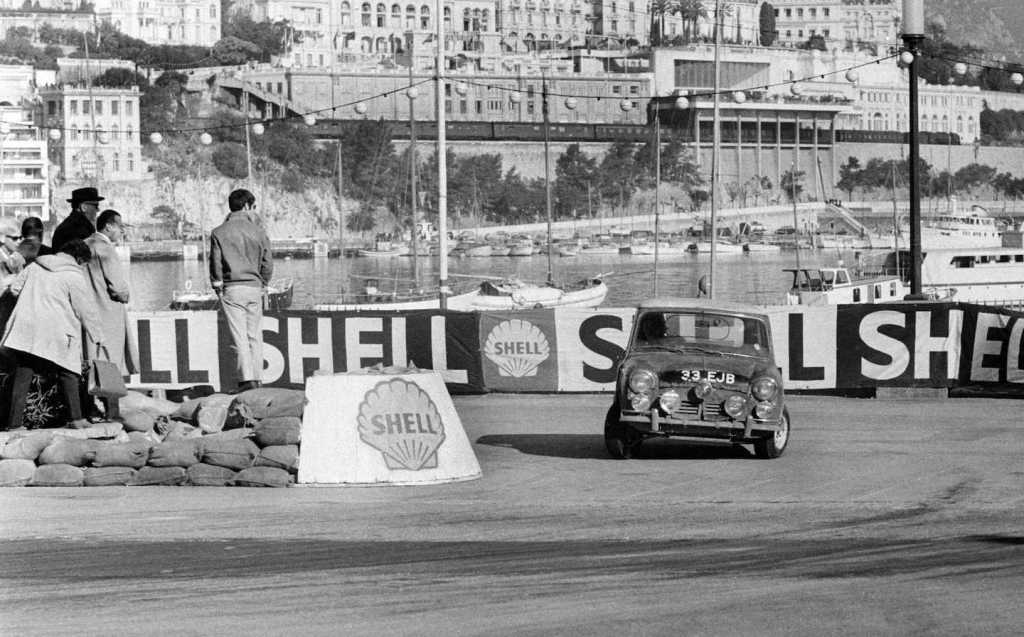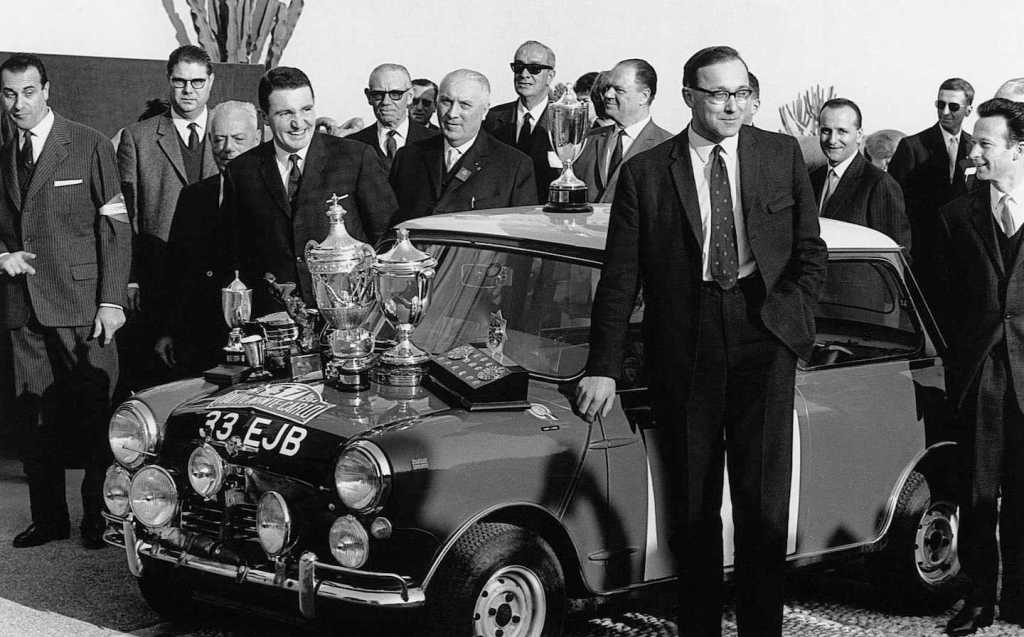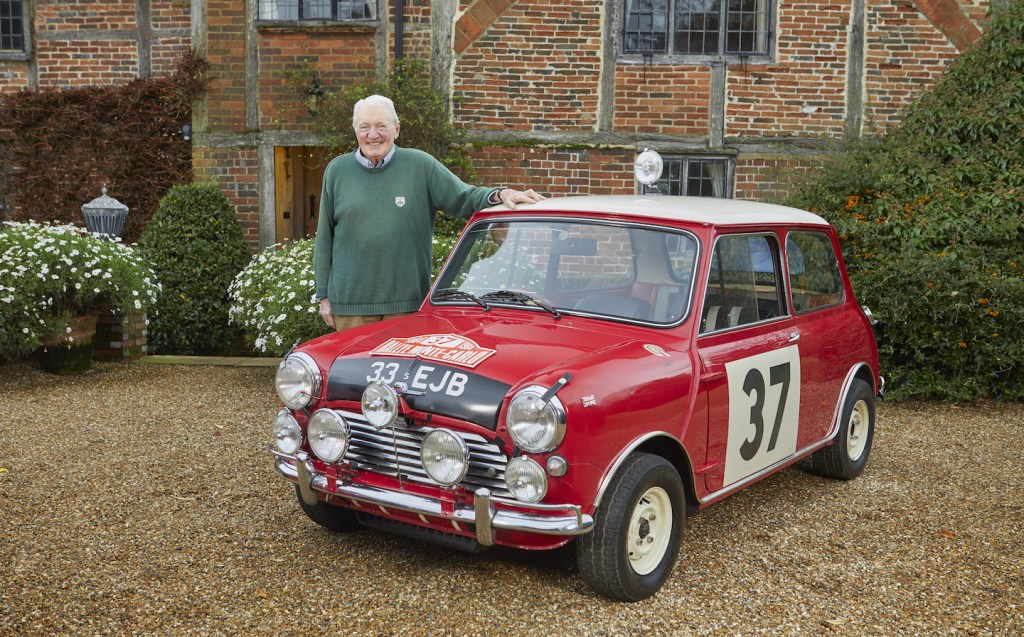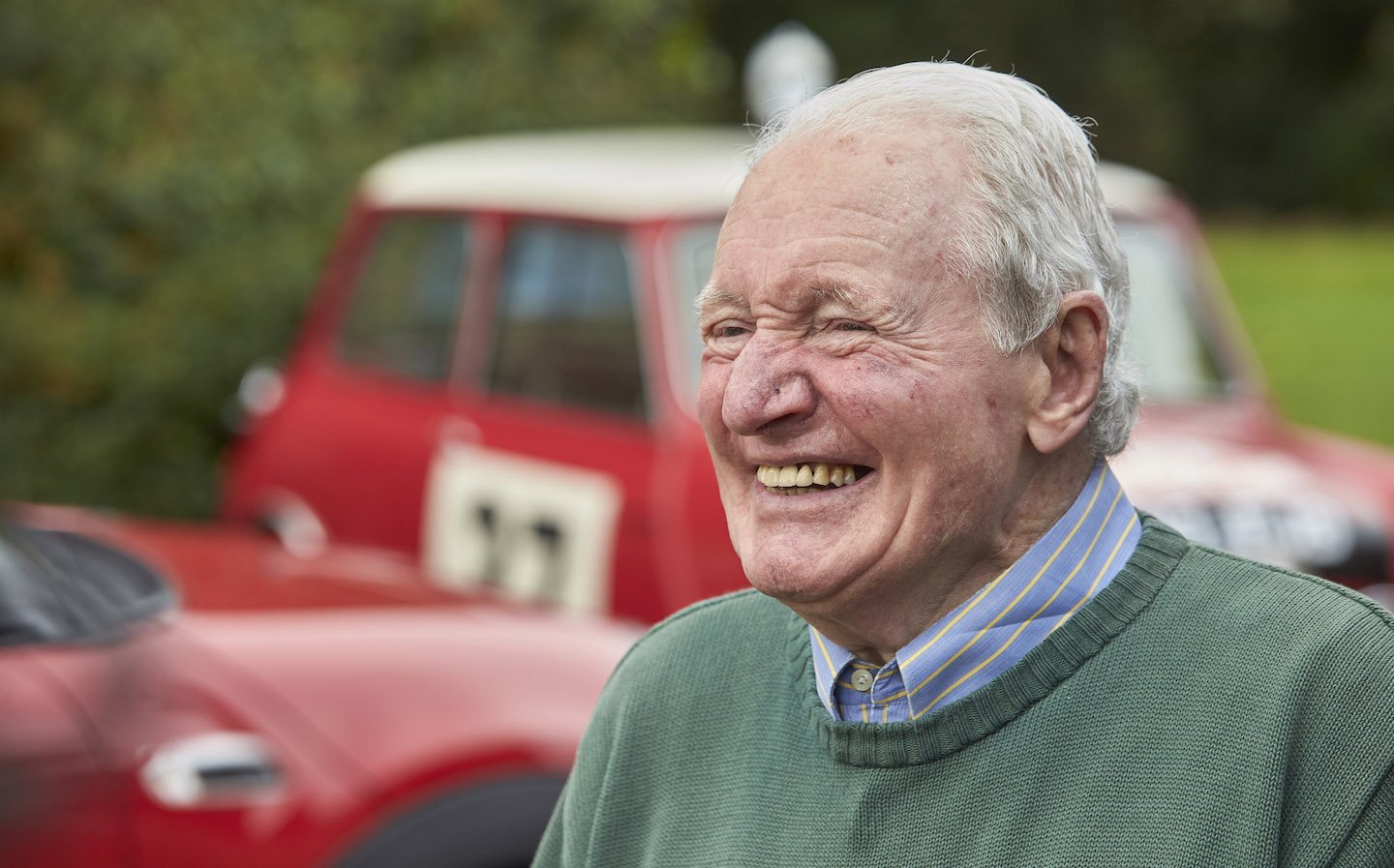Paddy Hopkirk, legendary rally driver, has died
Monte Carlo victory made him a household name
Paddy Hopkirk, the rally driver best-known for his victory driving a Mini Cooper in the 1964 Monte Carlo Rally and who also clocked-up notable wins in the Acropolis Rally, Alpine Rally and Circuit of Ireland, has died. He was 89.
Hopkirk’s death comes almost 70 years after his first rally win. As well as rallying, he finished the 24 Hours of Le Mans race three times as a works driver for the British Motor Corporation (BMC), founded a successful multimillion-pound motor accessories business and, in later life, became the Mature Drivers Ambassador for the Institute for Advanced Motorists, now known as IAM Roadsmart.
Paddy Hopkirk was born in Belfast in 1933 and claimed that he first learned about car control aged nine when a local clergyman left him an invalid carriage in his will. Having been educated at Clongowes Wood College near Dublin, alma mater of figures such as the writer James Joyce, he attended Dublin’s Trinity College and, although bright, he found little academic success due to his dyslexia.
While attending Trinity, he acquired his first rally car, an Austin Seven tourer in which he entered his first rally. Shortly after, he dropped out of college to work for Ireland’s Volkswagen assembly operation, from which he acquired a series of used Volkswagens to compete in rallies.

Hopkirk’s first win came in 1953, when aged 20, driving a Volkswagen, he won a hillclimb at Cairncastle in Co. Antrim, following which a local dealer offered him a free Beetle with which to compete in the 1954 Circuit of Ireland rally, an event which he would ultimately win five times.
In the ensuing years, Hopkirk graduated to a Triumph TR2 and in three consecutive years won the Hewison Trophy, an award given to the most successful Irish rally driver of the year. This accolade brought him to the attention of the Standard-Triumph company, which offered him a factory drive in one of its Standard Ten saloons. With little pace and reliability problems, he had little success at Standard, joining the Rootes Group as a works driver just a year later in 1959.
While with Rootes, Hopkirk put in some solid performances behind the wheel of a Sunbeam Rapier, winning the Circuit of Ireland twice in 1961 and 1962 as well as placing third in the 1962 Alpine and Monte Carlo rallies, the latter an event with which he would become synonymous.
Frustrated by the unreliable Sunbeam, Hopkirk moved to the British Motor Corporation, initially intending to drive one of its big Austin-Healey 3000s. Despite some good placings in the Healey, BMC’s Mini would bring him the most acclaim.

Hopkirk first drove a Mini competitively in the 1963 Monte Carlo Rally, finishing sixth, as well as finishing well in other events throughout the year. 1964 was to be his year, taking a 1,071cc Cooper S to a win on the most high-profile rally in the world with co-driver Henry Liddon. The victory turned Hopkirk (and the rapidly ascendant Mini) into a superstar and a household name, receiving telegrams from the Prime Minister, Alec Douglas-Home and The Beatles and subsequently appearing with his Mini (bearing the number plate 33 EJB) on Sunday Night at the London Palladium. Hopkirk’s victory, as well as countless celebrity owners, helped to cement the Mini’s part in the cultural Swinging Sixties zeitgeist.
More victories followed in Minis and Healeys, including more Circuit of Ireland wins, two Alpine Rally wins and the 1967 Acropolis Rally. Competing in the 1968 London to Sydney Marathon Rally, Hopkirk and his teammates Tony Nash and Alec Poole nobly threw away victory not far from the end in Australia when they stopped to save the life of Citroën driver Lucien Bianchi, who lay semi-conscious in a burning car following a crash. The BMC team in their Austin 1800 drove back to warn police and the emergency services of what had happened, perhaps preventing further accidents along the stage. They finished second.

Hopkirk stepped away from full-time rallying in the early seventies, though he still competed in occasional events. After his victory driving a Mini with Alec Poole in the 1990 Pirelli Classic Marathon, he also took part in the 1994 Monte Carlo Rally to mark thirty years since his last victory, again driving a factory-prepared Mini, this time bearing the registration L33 EJB. In an era of all-wheel drive Ford Escort Cosworths and Subaru Imprezas, the little 104bhp Mini finished 60th.
Hopkirk sold his motor accessories business in the 1990s and, despite his advanced age, was tireless even in recent years, being visible as a road-safety campaigner, disability rights activist, a prominent competitor in classic rallies and historic motor racing events and a consultant to BMW for the Mini brand. He never lost his passion for driving fast and well.
Paddy Hopkirk died yesterday (July 21) at Stoke Mandeville Hospital following an illness. He is survived by his wife, Jennifer, whom he married in 1967, three children and six grandchildren.
Following news of his death, a number of figures and organisations in the motoring world paid tribute to Hopkirk on Twitter.
Society of Motor Manufacturers and Traders (SMMT)
Steve Fowler, motoring journalist
World Rally Championship
British Racing Driver’s Club
British Motor Museum
Related articles
- After reading about the fantastic life of Paddy Hopkirk, discover the modern Mini that carries his name
- Or check out Will Dron’s extended report on the Mini Electric
- Did you know the Mini is one of our tips for a car that everyone should own once
Latest articles
- Aston Martin Valkyrie AMR-LMH hypercar hits track ahead of 2025 Le Mans challenge
- Porsche has begun testing the electric Cayenne
- Cupra Leon 272 eHybrid 2024 review: Bigger battery, better tech … but is it a Cupra?
- Porsche 911 GTS 2024 review: Hybrid heresy or more Stuttgart genius?
- Extended test: 2023 Vauxhall Astra Sports Tourer GS PHEV
- Ford Capri revival has faced a lot of flak… but are buyers put off? Here’s what visitors to the Festival of Speed had to say
- F1 2024 calendar and race reports: What time the next grand prix starts and what happened in the previous rounds
- ‘No timeframe’ for how long Volvo’s returning estate cars will be on sale in UK
- Kia Picanto 2024 review: Updates add spice to cute Korean city car














